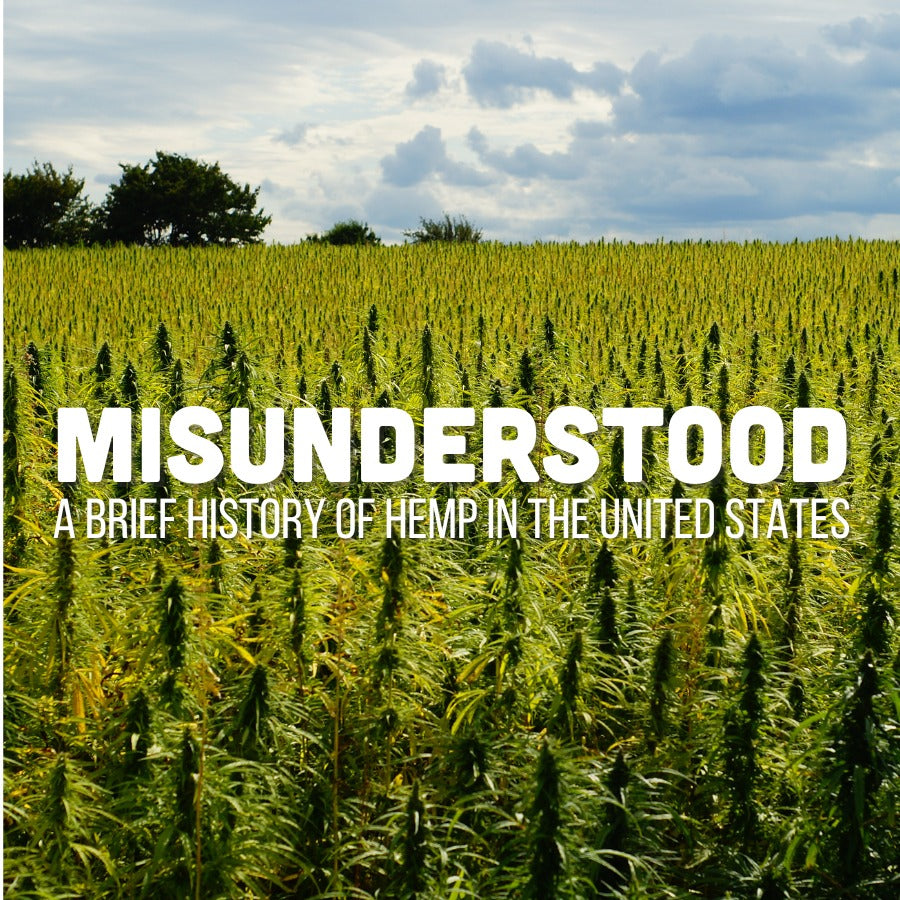Natural. Misunderstood. Legal. The Complicated History of Hemp in the U.S.
Hemp has long been one of the most misunderstood crops in American history. Despite its deep-rooted presence in agriculture - used for centuries to produce rope, textiles, paper, and even early versions of the American flag - hemp was caught in the crossfire of prohibition policies. In 1970, the passage of the Controlled Substances Act classified hemp alongside marijuana as a Schedule I drug, effectively banning its cultivation for commercial purposes.
For nearly five decades, hemp was unfairly stigmatized, despite its low THC content (the compound responsible for marijuana’s psychoactive effects) and its vast industrial potential. This misclassification made it nearly impossible for farmers and businesses to tap into the economic and environmental benefits of the crop. While other countries embraced hemp for its sustainability, carbon-sequestering abilities, and versatility, the U.S. lagged behind, restricting a plant that could have played a key role in the agriculture, textile, construction, and biofuel industries.
Everything changed in December 2018, when the passage of the Farm Bill finally removed hemp from the list of controlled substances. For the first time in nearly 50 years, American farmers could legally cultivate hemp on a commercial scale. This monumental shift opened the doors for innovation, investment, and a hemp renaissance - one that is now driving sustainability efforts, carbon sequestration projects, and even next-generation materials for industries like aviation and construction.
However, despite its newfound legality, hemp still faces regulatory hurdles, misinformation, and market challenges. As industries work to integrate hemp-based solutions into mainstream markets, the need for public awareness, policy support, and continued research remains critical. What was once a forbidden fibre is now reclaiming its rightful place as a key player in the fight against climate change and a foundation for a more sustainable economy.
Don’t miss this must-watch 15-minute film that will leave you inspired
Betting on Hemp: Colorado Farmers Turn to a Drought-Resistant Crop
In Colorado’s San Luis Valley, persistent drought is forcing farmers to rethink their future. For potato and barley growers Shannon Wright and his son-in-law Dion Oakes, that means exploring a more resilient alternative: industrial hemp.
Farming has been in their families for generations, and they dream of passing down their land to their children and grandchildren. But with rising costs of equipment, land, and water - coupled with increasingly dry conditions - that dream is slipping away. When the 2018 Farm Bill legalized industrial hemp in most states, Wright and Oakes saw an opportunity. However, they soon realized that decades of prohibition had wiped out much of the knowledge and infrastructure needed to grow hemp successfully in the U.S.
Determined to make it work, they teamed up with Patagonia Workwear, soil scientists from Colorado State University, the Governor of Colorado, and a hemp supplier from China. Their journey is documented in Bring Hemp Home: Colorado, a project that highlights their efforts to rebuild a sustainable U.S. hemp industry - one that supports soil health and helps keep farmers on their land.
By embracing hemp, Wright and Oakes aren’t just fighting to save their farm - they’re helping to revive an industry that could change the future of American agriculture.
Source: Patagonia
Misunderstood - The story about hemp in the USA





